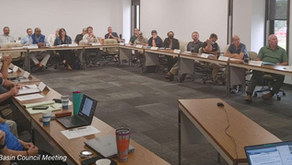Asset Management: When to Apply a Risk Matrix or Monte Carlo Analysis
- JD Solomon

- Jul 23, 2024
- 4 min read

I seldom hear anyone criticize the risk matrix in asset management. Such criticism is usually reserved for the risk management community, where the risk matrix remains the favorite punching bag. On the other extreme of analytics, Monte Carlo analysis is seen as the quiet, poorly understood savior of all. As with most things, the truth is somewhere in between. This article briefly describes when to apply a risk matric and when to opt for Monte Carlo analysis.
Context matters
Context is fundamental to all, including the international standard for asset management and the international standard for risk management. Context includes organizational maturity, financial stability, management transitions, staff experiences, formal processes, executive-level politics, changing customer expectations, situational awareness, and everything else that defines culture.
You have to have the right tool for the job. That’s why we have several tools in our tool bag.
Team-based Process
The risk matrix and Monte Carlo analysis are team-based processes. This is more obvious with a risk matrix, where a group of people must provide their subjective opinions. However, what is often lost is that a risk matrix is a consensus-building tool. In other words, the answer does not need to be right or wrong; we just need to agree.
Monte Carlo analysis gives the initial impression of an isolated activity performed by analytical geeks. Yet, much input is needed from staff to make sure the data and business practices are incorporated. A lot of team-based activity is needed on the back end if the results from a black box are to be accepted by all.
Applications of the Risk Matrix
I use the risk matrix in asset management to prioritize activities and initiatives. Yes, the risk matrix is a bit obligatory, but that's not a good reason to use it. I like it to chart the direction of data collection—nameplate, condition, asset value, and maintenance performance. Most organizations are simply looking for a place to start since resources are not available to do everything at once.
Nameplate Information (verification of existing data)
Condition Assessments
Replacement Asset Value (RAV)
Preventative Maintenance Strategies
Predictive Maintenance Strategies
Work Management
Human Resources Management
IT and Cybersecurity:
Financial Risk Management:
Safety Management
Supply Chain Management
Some Strengths of the Risk Matrix
Easy to use.
Provides a rapid ranking of risks into different significance levels.
Provides a clear visual display of the relevant significance of risk by consequence, likelihood, or level of risk.
It can be used to compare risks with different types of consequences.
Visual outputs that are easy to understand.
Some Weaknesses of the Risk Matrix
Expertise in subjective assessments is required to design a valid matrix.
Results depend on how well the scales were developed and calibrated.
Defining common scales that apply across a range of circumstances relevant to an organization.
Defining the scales unambiguously to enable users to weight consequence and likelihood consistently.
Each rating depends on the description and detail of an asset and scenario.
Defining failure, and consistently applying that definition.
Establishing the forward time period over which the likelihood is to be evaluated, and consistently applying that time period among all participants.
The results should be validated for reliability (repeatability).
Applications of Monte Carlo Analysis
Monte Carlo Analysis, also known as Monte Carlo Simulation, is a powerful tool in physical asset management due to its ability to handle uncertainty and variability in asset performance and lifecycle. Beyond forecasting renewal and replacement funding needs, here are several other applications:
Renewal and Replacement Financial Forecasts
Asset Health Forecasts (Future Condition of Assets)
Prioritization for Additional Data Collection
Predictive Maintenance Scheduling
Capacity Planning and Resource Allocation
Failure Mode and Effects Analysis (FMEA)
Some Strengths of Monte Carlo Analysis
Decision makers think in ranges and probabilities, not single-point estimates.
It captures and quantifies uncertainty.
The analysis accounts for intricate relationships among multiple variables.
It is one of the three most quantitative methods for risk assessment.
Software is affordable and readily available (It can be done as an Excel add-in).
Some Weaknesses of Monte Carlo Analysis
Few practitioners understand it.
The analysis relies on accurate input data.
Time is required to ensure data integrity and validate the assumptions used for the simulations.
Assumes the variables being modeled are independent of each other. (There may be hidden relationships or dependencies between variables).
Acceptance of results is highly dependent on how they are communicated.
Whether to Use a Risk Matrix or Monte Carlo Analysis
Context is the most important factor for deciding whether to use a risk matrix or to perform a Monte Carlo analysis. On one extreme, the risk matrix is the simplest to create, the most subjective, and the most likely to give questionable results. On the other extreme. Monte Carlo analysis is the most quantitative, the most difficult to construct, and the most likely to provide the best insights. Why limit yourself to only one tool?
JD Solomon Inc. provides solutions for program development, asset management, and facilitation at the nexus of facilities, infrastructure, and the environment. Sign up for monthly updates related to our firm.










Comments